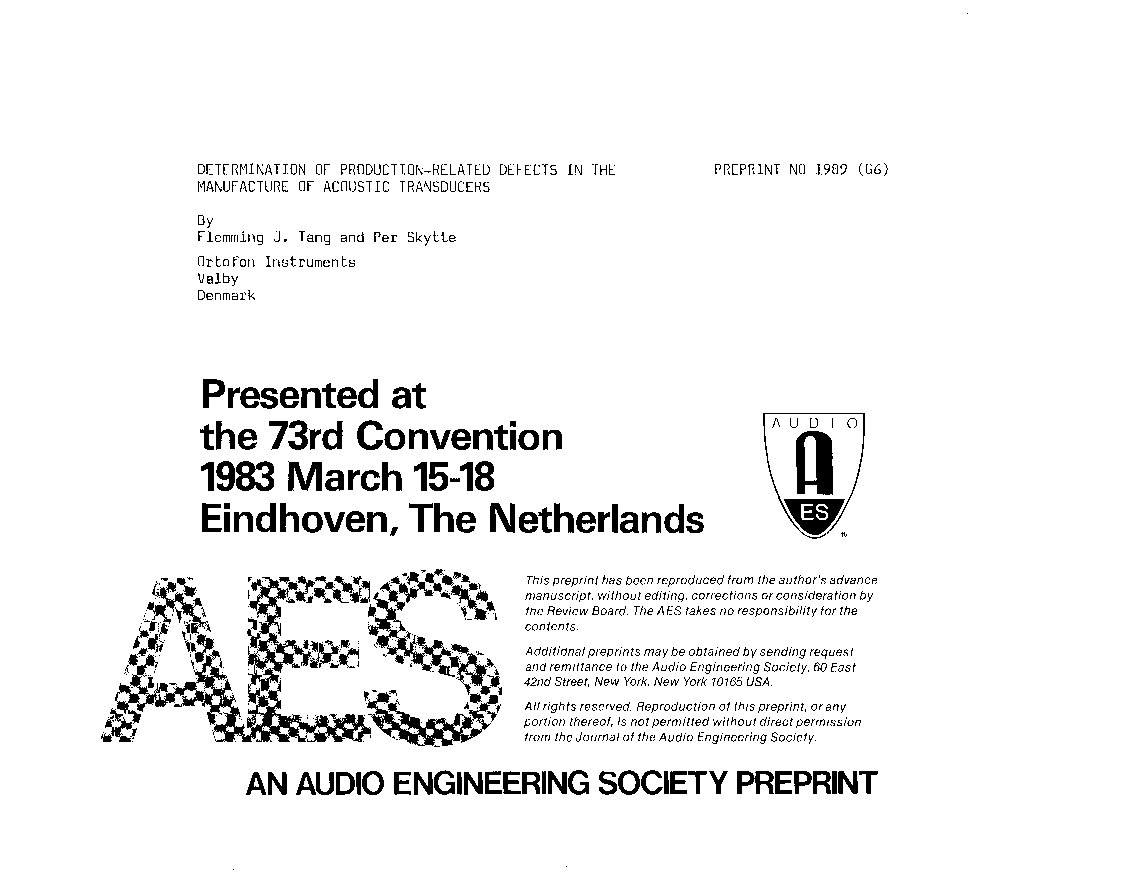Home / Publications / E-library page
You are currently logged in as an
Institutional Subscriber.
If you would like to logout,
please click on the button below.
Home / Publications / E-library page
Only AES members and Institutional Journal Subscribers can download
Every transducer has its own characteristics, determined by design. However, during a production run, trying to duplicate the laboratory reference, you may encounter bad materials, poor workmanship, and a couple of more undefineable problems leading to an end product which is not up to specifications. With dynamic headphones and loudspeakers taken as typical examples of modern acoustic transducers, this article describes typical failure mechanisms, how human beings perceive them, and what measurements are taken to characterize the distortion. Based upon the above knowledge, a test method suitable for production control of defects in acoustic transducers has been developed. The transducer under test is swept with a clean sinewave and the RMS-value of a combination of overtones is recorded as a function of frequency. When compared with the response of a known "good" unit, defects are easily identified. Furthermore, the defects found by this objective method correspond closely to a human being`s judgment based on a careful listening test with a pure sine. Since the defect detection can be done with a good dynamic range, it is very suitable for a fully automatic, computerized test where you can specify a maximum deviation from a reference as a function of frequency.
Author (s): Tang, Flemming J.; Skytte, Per
Affiliation:
Ortofon Instruments, Valby, Denmark
(See document for exact affiliation information.)
AES Convention: 73
Paper Number:1989
Publication Date:
1983-03-06
Import into BibTeX
Permalink: https://aes2.org/publications/elibrary-page/?id=11773
(1142KB)
Click to purchase paper as a non-member or login as an AES member. If your company or school subscribes to the E-Library then switch to the institutional version. If you are not an AES member Join the AES. If you need to check your member status, login to the Member Portal.

Tang, Flemming J.; Skytte, Per; 1983; Determination of Production-Related Defects in the Manufacture of Acoustic Transducers [PDF]; Ortofon Instruments, Valby, Denmark; Paper 1989; Available from: https://aes2.org/publications/elibrary-page/?id=11773
Tang, Flemming J.; Skytte, Per; Determination of Production-Related Defects in the Manufacture of Acoustic Transducers [PDF]; Ortofon Instruments, Valby, Denmark; Paper 1989; 1983 Available: https://aes2.org/publications/elibrary-page/?id=11773